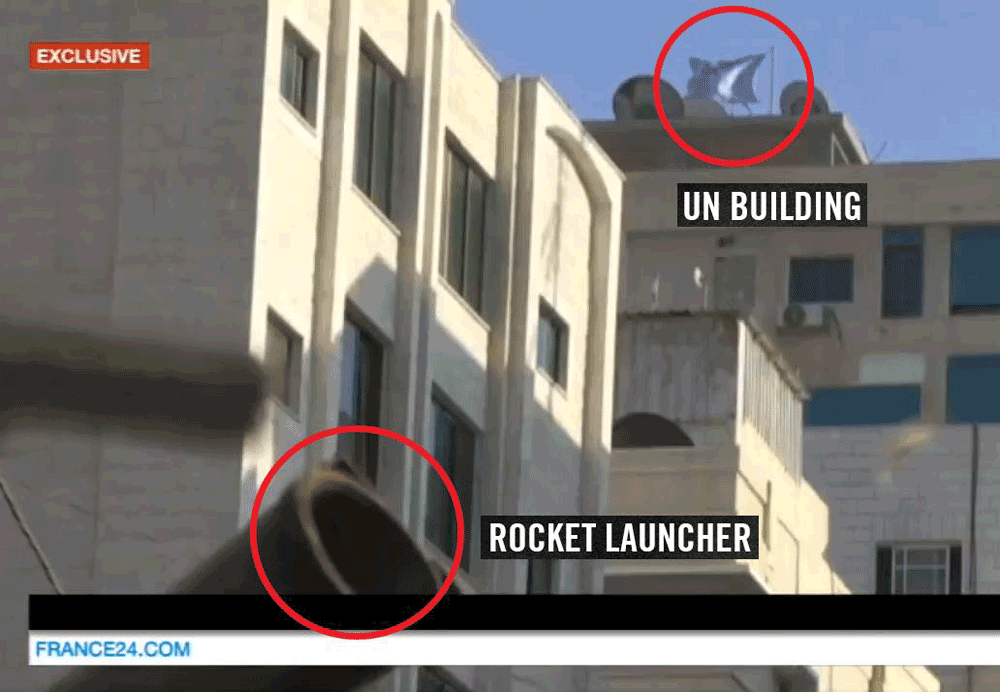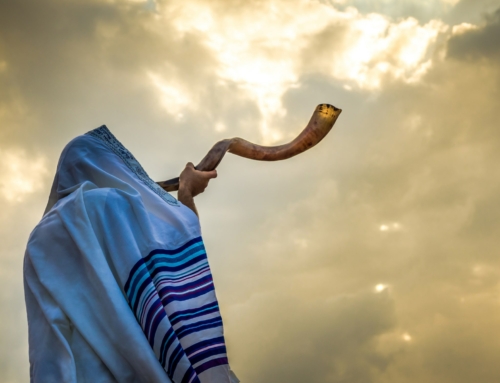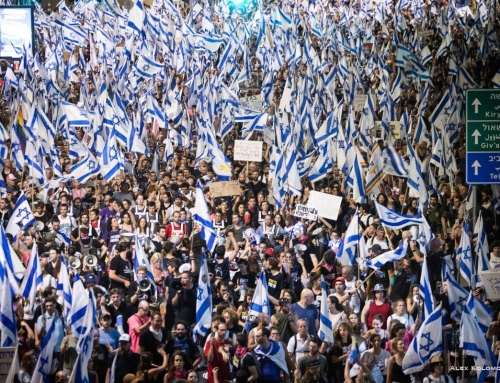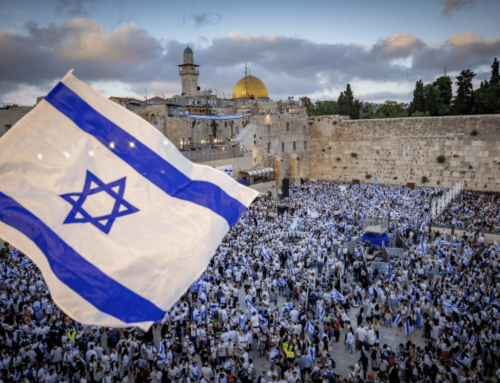How do you capture the essence of mass suffering on both sides of the Gaza conflict? The reporters and cameramen in Gaza instinctively knew where to seek out the world’s distorted perception of what really went on. They simply waited at the emergency room entrance of Gaza’s hospitals. Wailing ambulances, grieving women, bereaved husbands and fathers, crying children, and baying crowds were perfect images for the rolling news networks, as victims were carried away on blood-stained stretchers. Great, powerful encapsulations of the horror of war in 60 second reports.
Of much weaker visual and emotional impact was the constant dash by Israeli families to the nearest shelter, with only seconds before an uncontrolled Hamas’ rocket would smash into a nearby indiscriminate target.
The fact that Hamas fired more than 3,200 rockets into Israel doesn’t have the same headline appeal to western editors as the horrifying casualty numbers claimed inside Gaza- numbers that that are hard to factually confirm in the mists of a war zone. Yet the headline of 1,800 dead Palestinians trumps 60 Israelis killed.
So the world judges perversely what has gone on and concludes there is something unjust, unfair in what is popularly viewed as a conflict without any ‘balance’ between the combatants. Doesn’t matter who started it. No credits to Israel for advance warning to the Gazans on where its military will target next. No sympathy from the UN for Israel, even when its own Gaza schools are used as launching platforms and storage of rocket arsenals. Stories of Gaza victims being rushed to Israeli hospitals for treatment don’t fit well with the ‘war is hell’ drama scenario the press likes to portray.
It’s all a very black and white war in the eyes of the world–21st century warfare fought on the color TV screens of your favorite satellite channel.
Death, suffering and trauma have left hundreds and thousands in shock on both sides. The softer side of the conflict, though, doesn’t easily fit the news script of thumping music intros and faux serious expressions of the world’s newsreaders.
So, nobody is going to care about the Arab taxi driver in Jerusalem who has worked all day to earn less than $24. Tonight he will go home to a family on the Mount of Olives and worry how the bills will be paid. Nobody will feel the stress of the Jewish restaurant owner who wonders how he can pay and retain his staff when Israel’s tourists have vanished at the height of the summer season.
Empty hotels, empty airline seats. Israel’s tourist industry is a major source of its economic survival, but after a record 3.5 million visitors last year, 2014 is on course to be a financial black hole for hundreds and thousands who depend on the fickle mood of tourists and pilgrims.
Gaza has endured massive destruction, so the next plot line for journalists will be profiles of families who have lost their homes and possessions. The UN estimates that reconstruction and repair to the infrastructure could cost $25 billion. For the Arab states who support Hamas, that will be insignificant, but western nations must also be seen to do their part with massive donations of goods and materials. Will all that fresh concrete be used to build new housing and businesses, or will some of that donation go underground to replace destroyed tunnels?
Hamas isn’t known for its civic planning and attention to building a pleasant living environment for its citizens. That would go off-story to promote the misery and suffering endured by its third-generation refugees.
Beware of the wringing-hands press view of reconstruction in this next phase of the never-ending Gaza saga. During its invasion of Lebanon in 1982, the Israeli Air Force bombed Beirut airport and destroyed most of the fleet of Lebanon’s Middle East Airlines. What a tragedy, reported the press. In fact, the airline was secretly overjoyed that their old planes had been wiped out. Now, they could buy a brand new fleet of the latest passenger jets and compete with western airlines. But who knew that side of story?
Uncountable people have suffered directly and indirectly from the madness of this conflict. The trauma and sadness will not be lifted anytime soon. The killing in neighboring Syria, Iraq and Libya continues.
Emotions will dictate that politicians the world over will renew their rhetoric to ‘do something’ no matter how unwise and pointless their plans will be.
So how does a Christian respond to so much hurt, damage and loss? We are commanded to pray for the peace of Jerusalem. Sensitive prayer will seek God’s physical, mental and spiritual healing and revelation for both Muslims and Jews who have lived through this conflict.
Gaza will receive massive financial aid, while Israel will need the friendship of Christians around the world to return as lovers of Zion and to buy Israeli products in the face of boycotts and protests.
More importantly, Israelis must seek a spiritual renaissance to recover the call God has put upon them. Bible commentator Matthew Henry best explained this in this interpretation of Isaiah 30:1-7. His prophetic insight, first published in 1706, offered this extraordinary insight:
“It was often the fault and folly of the Jews, that when troubled by their neighbours on one side, they sought for succour from others, instead of looking up to God. Nor can we avoid the dreadful consequences of adding sin to sin, but by making the righteousness of Christ our refuge, and seeking for the sanctification of the Holy Spirit. Men have always been prone to lean to their own understandings, but this will end in their shame and misery. They would not trust in God. They took much pains to gain the Egyptians. The riches so spent turned to a bad account. See what dangers men run into who forsake God to follow their carnal confidences. The Creator is the Rock of ages, the creature a broken reed; we cannot expect too little from man, or too much from God. Our strength is to sit still, in humble dependence upon God and his goodness, and quiet submission to his will.”









Leave A Comment